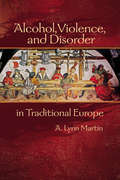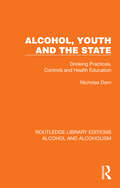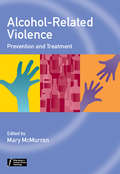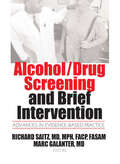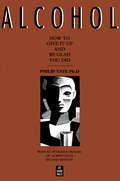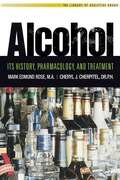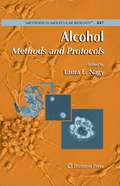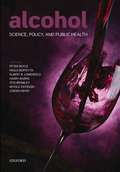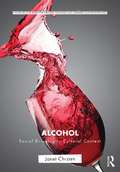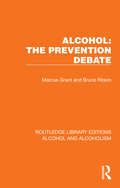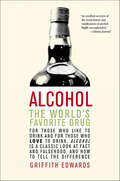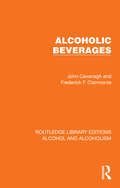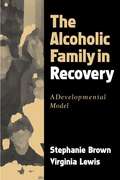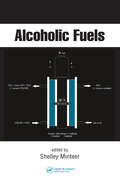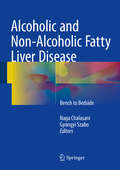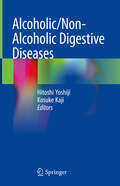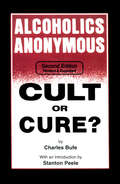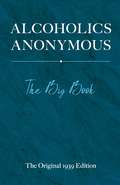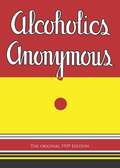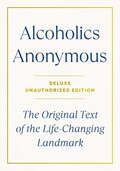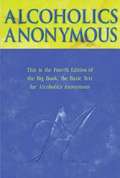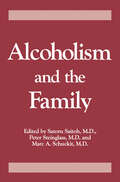- Table View
- List View
Alcohol, Violence, and Disorder in Traditional Europe (Early Modern Studies #2)
by A. Lynn MartinTraditional Europe had high levels of violence and of alcohol consumption, both higher than they are in modern Western societies, where studies demonstrate a link between violence and alcohol. A. Lynn Martin uses an anthropological approach to examine drinking, drinking establishments, violence, and disorder, and compares the wine-producing south with the beer-drinking north and Catholic France and Italy with Protestant England, and explores whether alcohol consumption can also explain the violence and disorder of traditional Europe.Both Catholic and Protestant moralists believed in the link, and they condemned drunkenness and drinking establishments for causing violence and disorder. They did not advocate complete abstinence, however, for alcoholic beverages had an important role in most people's diets. Less appreciated by the moralists was alcohol's function as the ubiquitous social lubricant and the increasing importance of alehouses and taverns as centers of popular recreation.The study utilizes both quantitative and qualitative evidence from a wide variety of sources to question the beliefs of the moralists and the assumptions of modern scholars about the role of alcohol and drinking establishments in causing violence and disorder. It ends by analyzing the often-conflicting regulations of local, regional, and national governments that attempted to ensure that their citizens had a reliable supply of good drink at a reasonable cost but also to control who drank what, where, when, and how.No other comparable book examines the relationship of alcohol to violence and disorder during this period.
Alcohol, Violence, and Disorder in Traditional Europe (Early Modern Studies)
by A. Lynn MartinTraditional Europe had high levels of violence and of alcohol consumption, both higher than they are in modern Western societies, where studies demonstrate a link between violence and alcohol. A. Lynn Martin uses an anthropological approach to examine drinking, drinking establishments, violence, and disorder, and compares the wine-producing south with the beer-drinking north and Catholic France and Italy with Protestant England, and explores whether alcohol consumption can also explain the violence and disorder of traditional Europe.Both Catholic and Protestant moralists believed in the link, and they condemned drunkenness and drinking establishments for causing violence and disorder. They did not advocate complete abstinence, however, for alcoholic beverages had an important role in most people's diets. Less appreciated by the moralists was alcohol's function as the ubiquitous social lubricant and the increasing importance of alehouses and taverns as centers of popular recreation.The study utilizes both quantitative and qualitative evidence from a wide variety of sources to question the beliefs of the moralists and the assumptions of modern scholars about the role of alcohol and drinking establishments in causing violence and disorder. It ends by analyzing the often-conflicting regulations of local, regional, and national governments that attempted to ensure that their citizens had a reliable supply of good drink at a reasonable cost but also to control who drank what, where, when, and how.No other comparable book examines the relationship of alcohol to violence and disorder during this period.
Alcohol, Youth and the State: Drinking Practices, Controls and Health Education (Routledge Library Editions: Alcohol and Alcoholism)
by Nicholas DornIn the early 1980s teenage drinking had become one of the many foci for expressions of concern about young peoples’ morals, health and discipline. Yet we knew very little about how most young people drink – the qualitative aspects of youthful drinking. The research emphasis had hitherto been upon the level of drinking, neglecting the social forms, styles and associated meanings of specific drinking practices such as round-buying. Originally published in 1983, the core of this book reports upon an ethnographic study of the circumstances, cultures and drinking practices of one particular stratum of youth. The service sector had become an increasingly important area of employment, but little was known about service sector youth cultures. The author shows how mixed-sex round buying arises in such a culture and how it differs from the drinking practices of other groups. The study goes on to develop a general model for understanding drinking practices in diverse strata of youth, and draws out implications for health and social education. Drink education is related to the increasingly important, and contentious, area of education about ‘working life’ and to sexual divisions in society. Introducing these sections is a review of the historical origins of concern about public drinking. Originating in yearly Vagrancy Acts and elaborated over 500 years, the state’s policies about production, distribution, and consumption of alcohol are an integral part of its general economic and social policies, and will continue to be framed by them.
Alcohol-Related Violence: Prevention and Treatment
by Mary McmurranNew in the Wiley Series in Forensic Clinical Psychology, Alcohol-Related Violence: Prevention and Treatment presents an authoritative collection of the most recent assessment and treatment strategies for alcohol-related aggression and violence. Features contributions from leading international academics and practitioners Offers invaluable guidance for practitioners regarding intervention to reduce alcohol-related aggression and violence Describes evidence-based interventions at a number of levels, including populations, bar room, families, couples, and individuals
Alcohol/Drug Screening and Brief Intervention: Advances in Evidence-Based Practice
by Richard Saitz Mark GalanterGet a better understanding of what is known and what is not known in this widespread practice Screening and brief intervention (SBI) has been around for over 40 years and is a widely recognized practice. Alcohol/Drug Screening and Brief Intervention: Advances in Evidence-Based Practice provides a valuable exploration of the present literature, the effectiveness and cost-effectiveness of screening and brief intervention, and methodological challenges in studying these practices. Respected leaders in the field discuss ways to measure the use of screening and brief intervention in practice, the multiple risk factor context in which unhealthy alcohol use occurs, clinician training issues, effective strategies to screen adolescents, which patients are most likely to change from SBI, and what research is needed in the future. Screening and brief intervention are presently being used in numerous settings such as hospitals, primary care settings, trauma centers, and college health services. Alcohol/Drug Screening and Brief Intervention: Advances in Evidence-Based Practice examines in detail original research and cutting edge research issues in these settings to provide an important review of what is known and what is not known about the practice. Methodological issues are extensively discussed. This valuable book provides crucial information on the detection of small effects, standards of analysis, reporting, interpretation, the risks of bias, and the need to ensure that results have the potential to be applied in practice. Health professionals and addiction specialists get an important critical re-evaluation of the growing practice and are provided direction for future research. Other topics in Alcohol/Drug Screening and Brief Intervention: Advances in Evidence-Based Practice include: results of research on screening, brief intervention, and referral to treatment (SBIRT) exploration of data assessing the effectiveness of screening and brief alcohol intervention evaluation of clinical alcohol screening with the AUDIT-C cost-effectiveness and cost-benefit of SBI in medical settings research into SBIRT for Emergency Departments data on primary care patients with multiple risk factors research on feasibility and efficacy of "no-contact" interventions and more! Alcohol/Drug Screening and Brief Intervention: Advances in Evidence-Based Practice is essential reading for alcohol and drug researchers, screening and brief intervention program practitioners, physicians, nurses, health promotion advocates, Public Health Practitioners, and the State Departments of Public Health.
Alcohol: A History
by Rod PhillipsWhether as wine, beer, or spirits, alcohol has had a constant and often controversial role in social life. In his innovative book on the attitudes toward and consumption of alcohol, Rod Phillips surveys a 9,000-year cultural and economic history, uncovering the tensions between alcoholic drinks as healthy staples of daily diets and as objects of social, political, and religious anxiety. In the urban centers of Europe and America, where it was seen as healthier than untreated water, alcohol gained a foothold as the drink of choice, but it has been more regulated by governmental and religious authorities more than any other commodity. As a potential source of social disruption, alcohol created volatile boundaries of acceptable and unacceptable consumption and broke through barriers of class, race, and gender.Phillips follows the ever-changing cultural meanings of these potent potables and makes the surprising argument that some societies have entered "post-alcohol" phases. His is the first book to examine and explain the meanings and effects of alcohol in such depth, from global and long-term perspectives.
Alcohol: How to Give It Up and Be Glad You Did
by Albert Ellis Philip TateThis practical, comprehensive, and easy to use book helps alcohol abusers understand their behavior, but provides practical steps that anyone can use to solve an alcohol problem. Written by a cognitive-behavioral psychologist, this book includes chapters on overcoming low self-esteem, depression, stress, attending self-help groups, and living a better life after quitting. Each chapter contains specific self-help techniques. Recommended by SMART Recovery.
Alcohol: It's History, Pharmacology and Treatment
by Cheryle J. Cherpital Mark Edmund RoseThe definitive guide to the effect of alcohol on people, families, communities, and society, written by two of America's leading experts on alcoholism and its impact.Throughout history, and across cultures, alcohol has affected the fabric of society through abuse and addiction, contributed to violence and accidents, and caused injuries and health issues. In Alcohol: Its History, Pharmacology, and Treatment, part of Hazelden's Library of Addictive Drugs Series, Cheryl Cherpitel, DrPH, and Mark Rose, MA, examine the nature and extent of alcohol use in the United States, current treatment models and demographics, and the biology of alcohol, addiction, and treatment.In separating fact from fiction, Cherpitel and Rose give context for understanding the alcohol problem by tracing its history and different uses over time, then offer an in-depth look atthe latest scientific findings on alcohol's effects on individualsthe myths and realities of alcohol's impact on the mindthe societal impacts of alcohol abuse as a factor in violence and accidentsthe pharmacology of pharmaceutical treatments for alcoholismthe history of treatment and current therapeutic treatment modelsThoroughly researched and highly readable, Alcohol offers a comprehensive understanding of medical, social, and political issues concerning this legal, yet potentially dangerous, drug.
Alcohol: Methods and Protocols (Methods in Molecular Biology #447)
by Laura E. NagyThis book examines the pleiotropic effects of ethanol in animal and cell culture models through a collection of detailed procedures written by experts in the field. Sections present clearly defined models of ethanol exposure, recent advances in the development of specific methodologies to mimic the impact of ethanol metabolism in cultured cells, and methodologies to investigate a variety of cells and tissues that are known to be disrupted by ethanol, amongst other topics.
Alcohol: Science, Policy and Public Health
by Paolo Boffetta Peter Boyle Albert B. Lowenfels Harry Burns Otis Brawley Witold Zatonski Jürgen RehmAlcohol has always been an issue in public health but it is currently assuming increasing importance as a cause of disease and premature death worldwide. Alcohol: Science, Policy, and Public Health provides an interdisciplinary source of information that links together, the usually separate fields of, science, policy, and public health. This comprehensive volume highlights the importance of bringing scientific knowledge to bear in order to strengthen and develop alcohol public policy. The book looks at the historical evolution of alcohol consumption in society, key early studies of alcohol and disease, and the cultural and social aspects of alcohol consumption. It then goes on to cover the chemistry and biology of alcohol, patterns of consumption, gender and age-related issues, alcohol and injury, alcohol and cancer and non-malignant disease, and various current therapeutic aspects. The book concludes with a section on alcohol policy, looking at issues of poverty, the availability of alcohol and alcohol control measures. This major reference, written by international leaders in the fields of alcoholism and alcohol policy, provides a comprehensive study of one of the foremost health problems in the world, and represents the highest standards of research within the field. It will be valuable to physicians and health professionals involved with patients with alcohol-related problems, scientists, public health specialists, health policy specialists, researchers and legislators as well as students of public health.
Alcohol: Social Drinking in Cultural Context (Routledge Series for Creative Teaching and Learning in Anthropology)
by Janet ChrzanAlcohol: Social Drinking in Cultural Context critically examines alcohol use across cultures and through time. This short text is a framework for students to self-consciously examine their beliefs about and use of alcohol, and a companion text for teaching the primary concepts of anthropology to first-or second year college students.
Alcohol: The Prevention Debate (Routledge Library Editions: Alcohol and Alcoholism)
by Marcus Grant Bruce RitsonIn the early 1980s, emphasis had shifted from the treatment of alcohol problems to their prevention. Yet no clear integrated policy yet existed about how alcohol problems could best be prevented. Many different strategies were put forward as solutions but some were in competition with each other, while some were actually incompatible. Originally published in 1983, what this book does is to draw together a cross section of these different and competing voices so as to give a sense of the quality and direction of the great alcohol debate at the time. After setting into context some of the basic questions to do with the prevention of alcohol problems, the authors knit together and juxtapose short contributions from a very wide variety of experts from around the world. Clinicians, educators, sociologists, advertisers, marketing men, economists, philosophers, geneticists and international civil servants present different points of view on health education, the media, advertising, trade, the law, the environment and on the ethical basis of the debate itself. The authors bravely attempt to pull some general sense out of this profusion of what the way ahead is likely to be. It should be noted that this reissue very much reflects the context of the times in which it was written and that the contributors were participating in a debate where differences of opinion were actively encouraged.
Alcohol: The World's Favorite Drug
by Griffith EdwardsAlcohol can be an item of diet, a medicine, sometimes an element in religious ritual. It is a valued object for the connoisseur, a traded commodity and a symbol of national pride (wine for instance in France, whisky in Scotland). The range of social and medical problems associated with alcohol and the history of related treatment methods (including the temperance movement, prohibition, AA and a range of contemporary approaches) are considered here. Already considered a classic in the field in England, Alcohol has proved to be fascinating reading for drinkers and nondrinkers alike.
Alcoholic Beverages (Routledge Library Editions: Alcohol and Alcoholism)
by John Cavanagh Frederick F. ClairmonteFor most of the post-war period, alcohol problems had been viewed primarily as individual problems. During the 1970s and 1980s, research highlighted the importance of larger socio-economic factors in shaping drinking levels, patterns and problems. However, it largely ignored a paramount force which shaped this larger socio-economic environment: the modern multinational corporation. The aim of this book, originally published in 1985, was to demonstrate, on the basis of historical analysis, that transnational corporate structures and marketing strategies exercised a powerful impact on the availability and consumption of alcoholic beverages in both developed and developing marketing economies. While the authors did not want to suggest a single causal relationship between corporate strategies and the consumption of alcoholic beverages, the implications of their work were of the greatest significance to public health throughout the world. The book was an indispensable work for those interested in public health, alcoholism, and multinational business at the time. Today it can be read in its historical context.
Alcoholic Family in Recovery
by Stephanie Brown Virginia M. LewisMost treatments for alcoholism have focused on abstinence as their final goal and emphasize brief interventions with the addicted individual. But family relationships change dramatically when the alcoholic stops drinking in fact, stress, turmoil, and uncertainty are the norm. This volume details how to help families regroup after abstinence, ride out periods of emotional upheaval, and find their way to establishing a more stable, yet flexible, family system. Using a compelling case-study format to illustrate the process of change, the book presents the moving personal experiences of families at different stages of the recovery process. Expanding the therapist's role to include psychoeducation and supportive counseling, the authors provide pointers for assessment at key stages of recovery and guide clinicians through bringing about lasting change.
Alcoholic Fuels
by Shelley MinteerScientists and engineers have made significant advances over the last two decades to achieve feasible, cost-efficient processes for the large-scale production of alternative, environmentally friendly sources of energy. Alcoholic Fuels describes the latest methods for producing fuels containing varying percentages of alcohol alongside the var
Alcoholic and Non-Alcoholic Fatty Liver Disease: Bench to Bedside
by Naga Chalasani Gyongyi SzaboThis volume is the first text to concisely yet comprehensively cover developments for both alcoholic and nonalcoholic fatty liver disease in an organized fashion. Aspects of these two diseases covered in the book include global epidemiology and risk factors, pathogenesis, animal models, hepatic and extra-hepatic malignancies, treatment models, and current and emerging therapies. Written by experts in the field, Alcoholic and Non-Alcoholic Fatty Liver Disease: Bench to Bedside is a valuable resource for gastroenterologists, pathologists, and hepatologists who treat patients with alcoholic and nonalcoholic fatty liver disease.
Alcoholic/Non-Alcoholic Digestive Diseases
by Hitoshi Yoshiji Kosuke KajiThis book describes the latest advances concerning the molecular mechanisms of and therapeutic strategies for alcohol- and non-alcohol-related digestive diseases. Alcohol abuse causes not only liver injury but can harm various organs, resulting in esophageal and colorectal cancers, GERD, pancreatitis, etc. Similar to alcoholic abuse, metabolic syndrome based on obesity and diabetes is also strongly associated with the development of various digestive diseases. Although these diseases may be differentiated by the presence or absence of alcohol intake, the pathologic findings and pathogenesis reveal a number of similarities. This volume covers clinical and basic approaches for esophageal, gastric, hepatic, colorectal and pancreatic diseases associated with alcohol abuse and metabolic syndrome; further, it discusses the roles of microbiota, oxidative stress, and apoptosis, the critical factors causing alcoholic and metabolic digestive diseases. Also, it showcases new pathological and therapeutic perspectives in gastric and pancreatic cancers. Alcoholic/Non-Alcoholic Digestive Diseases will provide invaluable information for doctors specializing in gastroenterology and hepatology and researchers seeking new research on digestive diseases based on alcohol consumption and obesity.
Alcoholics Anonymous: Cult or Cure?
by Stanton Peele Charles BufeThis well researched, painstakingly documented book provides detailed information on the right-wing evangelical organization (Oxford Group Movement) that gave birth to AA; the relation of AA and its program to the Oxford Group Movement; AA's similarities to and differences from religious cults; AA's remarkable ineffectiveness; and the alternatives to AA. The greatly expanded second edition includes a new chapter on AA's relationship to the treatment industry, and AA's remarkable influence in the media.
Alcoholics Anonymous: The Big Book: The Original 1939 Edition
by Bill W.Many thousands have benefited from "The Big Book" and its simple but profound explanation of the doctrines behind Alcoholics Anonymous, which was founded in 1935 by Bill Wilson and Dr. Bob Smith. This original 1939 edition outlines the famous 12 steps, and offers counsel for those who wish to join the program but doubt the existence of a higher power. It also contains encouraging personal stories, in which AA members relate their experiences with alcohol and how they found the path to sobriety."The Big Book" has gone through numerous editions and remains the most widely used resource for recovering alcoholics. Only this original 1939 edition includes all 29 stories of the program's pioneers, which share the details of their full journey, including initial recovery, sometimes followed by relapse and eventual success. This edition also features the key to the solution claimed by Bill Wilson: a vital spiritual experience that allows followers to rediscover, or discover, God.This realistic portrayal of the program as offered by its founders has been lost in subsequent editions of the work, and is presented here to serve as a reminder that success comes in many forms.
Alcoholics Anonymous: The Landmark of Recovery and Vital Living
by Mitch HorowitzThe self-help landmark that has led millions from addiction into revitalized lives is now faithfully condensed and introduced by PEN Award-winning historian Mitch Horowitz. Since its publication in 1939, Alcoholics Anonymous has brought a ray of light into the world, rescuing countless people the grinding compulsion of addiction and inspiring the global "twelve-step" movement. Now, historian and New Thought writer Mitch Horowitz provides a concise yet wholly faithful abridgement and introduction to the "Big Book," suited to newcomers who are first encountering its ideas, veterans looking for a refresher, and anyone curious about this classic of spiritual self-renewal. The genius of Alcoholics Anonymous is that its twelve-step program can be applied to any addiction or area of life where one is crippled by compulsion, whether gambling, drugs, debt-spending, chronic overeating, or whatever endangers your wellness and deters you from a life of vitality.
Alcoholics Anonymous: The Original 1939 Edition (Dover Empower Your Life)
by Bill W. Dick BAlcoholics Anonymous was founded in 1935 by Bill Wilson and Dr. Bob Smith, who developed the organization's twelve-step program. In 1939, they published this volume, which sets forth the cornerstone concepts of recovery and relates stories of those who have overcome alcoholism. Informally known as "The Big Book," it has gone through numerous editions, and as a lifeline to millions worldwide, it is the most widely used resource for recovering alcoholics. This edition features an Introduction by Dick B., an active recovered member of the Alcoholics Anonymous Fellowship.
Alcoholics Anonymous: The Original Text of the Life-Changing Landmark, Deluxe Edition
by Bill W.The most important and practical self-help book ever written, Alcoholics Anonymous. Here is a book that has changed millions of lives and launched the modern recovery movement: Alcoholics Anonymous.This edition not only reproduces the original 1939 text of Alcoholics Anonymous, but as a special bonus features the complete 1941 Saturday Evening Post article &“Alcoholics Anonymous&” by journalist Jack Alexander, which, at the time, did as much as the book itself to introduce millions of seekers to AA&’s program. Alcoholics Anonymous has touched and transformed myriad lives, and continues to change lives today.This book is not authorized or produced by, or otherwise affiliated with, Alcoholics Anonymous (A.A.W.S.) or its corporations, namely Alcoholics Anonymous World Services, Inc.
Alcoholics Anonymous: The Story Of How Many Thousands Of Men And Women Have Recovered From Alcoholism
by Alcoholics Anonymous World ServicesIt's more than a book. It's a way of life. Alcoholics Anonymous-The Big Book-has served as a lifeline to millions worldwide. First published in 1939, Alcoholics Anonymous sets forth cornerstone concepts of recovery from alcoholism and tells the stories of men and women who have overcome the disease. With publication of the second edition in 1955, the third edition in 1976, and now the fourth edition in 2001, the essential recovery text has remained unchanged while personal stories have been added to reflect the growing and diverse fellowship. The long-awaited fourth edition features 24 new personal stories of recovery. Key features and benefits +the most widely used resource for millions of individuals in recovery +contains full, original text describing A. A. the program +updated with 24 new personal stories.
Alcoholism And The Family
by Peter Steinglass Saturo Saitoh Marc A. SchuckitThe science of the etiology and treatment of alcohol has made notable progress in recent years. Since the early 1970s there have been growing in-roads made concerning the relevance of hereditary factors in alcoholism. This has led to the presentation of various innovative hypotheses in this field. In conjunction with this there has been much discussion and study of the "alcoholic personality" and its possible characteristics. These may be considered the "longitudinal aspects" linked to the transmission of alcoholism.
